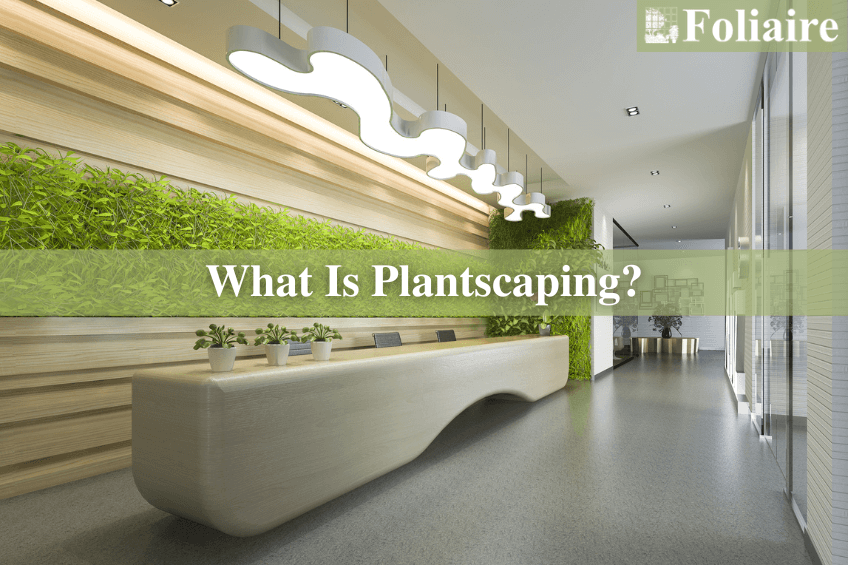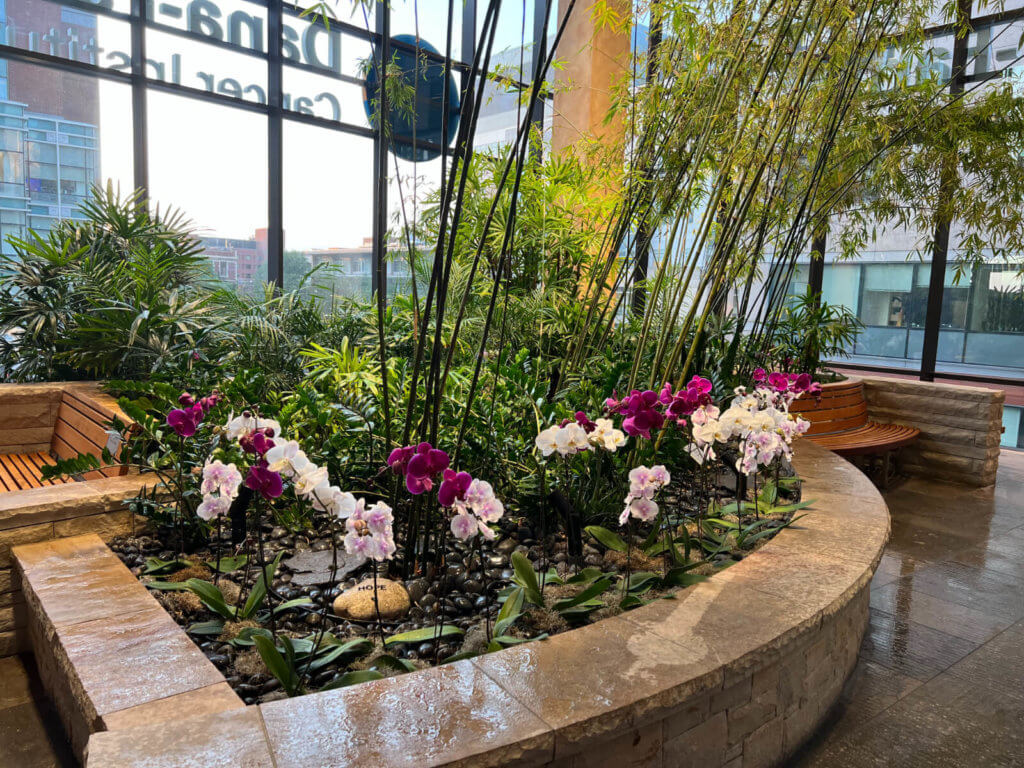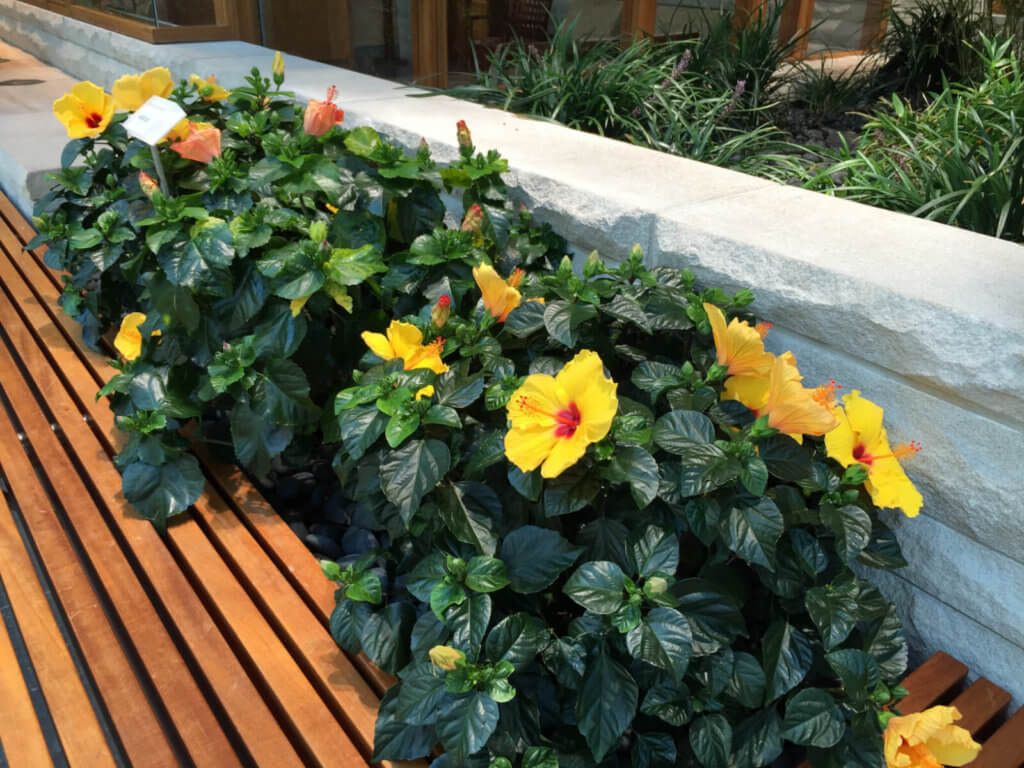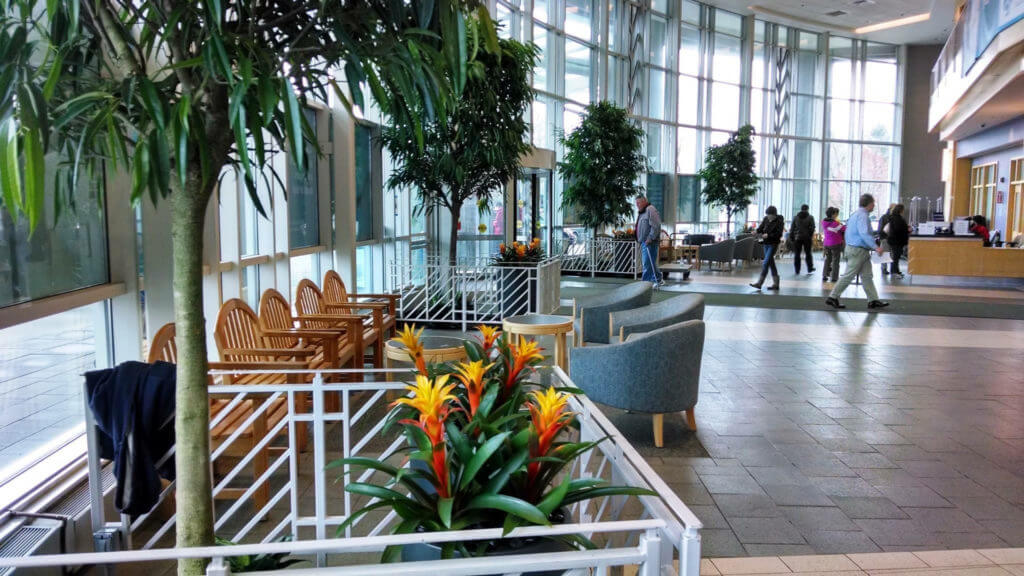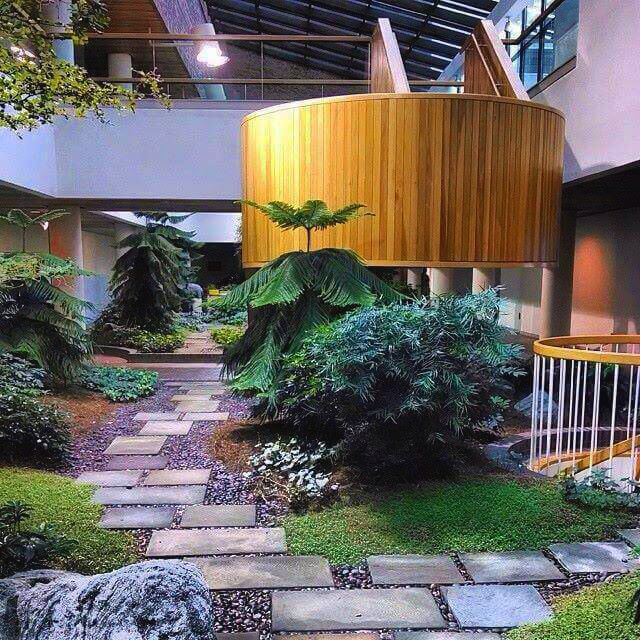What Is Interior Plantscaping?
As large segments of the American workforce continue to work in a hybrid office schedule, corporate plantscaping has become an emerging trend. Interior plantscaping is more than just placing a few plants in the corner—it’s the art and science of designing indoor environments that promote health, well-being, and productivity. By strategically incorporating plants into office interiors, companies can foster a connection to nature, known as biophilia, which has been proven to reduce stress and increase creativity.
If you aren’t familiar with interior plant design, we’ll explore how interior plant design can elevate health, morale, and productivity. This practice involves selecting the right plants, containers, and layout to transform a corporate interior into a vibrant, lively space that feels fresh and inviting.
Adding interior planting design elements throughout your office space will create a more welcoming and sophisticated first impression for visitors and employees. Plus, with proper plant care and thoughtful design, these green additions can improve air quality, reduce noise, and enhance the overall work environment.
What We’ll Cover:
How to Add a Plantscape to Your Office
Plantscaping, also known as interiorscaping, is another way to describe interior planting design. Any office can benefit from this solution, which offers aesthetic and environmental advantages. For the best office plantscaping solution, we recommend using a variety of plant species.
You can also include unique structures such as living walls. These walls often have practical benefits and can visually divide your office space. Tall plants can make a space appear even larger, whereas groups of plants go well where people congregate. You’ll also notice acoustic and thermal benefits after adding plants.
How Indoor Plantscaping Improves Air Quality
Poor air quality is one of our biggest issues when working in a busy city. Research suggests that the air you breathe daily at work immediately impacts your cognitive function. However, adding interiorscapes can help you play your part in improving air quality in your workspace.
Even buildings with excellent air filtration systems have areas to improve upon, where indoor plantscaping comes into play. Research suggests houseplants remove toxins from buildings within 24 hours of installation, as with urban gardens.
When considering plants to improve air quality, the spider plant is one of the top options for cleansing the air. Interior planting design solutions often incorporate this plant, which is easy to add to a desk or windowsill. The plant’s moisture can boost a room’s humidity while filtering out TCE, benzene, and other toxins.
Aloe vera and Boston fern are other options to consider, and their smaller size makes them perfect for the office plantscape. The more plants you can add to a space, the more you’ll notice the advantages of interior plantscaping.
Do you need help furnishing your office or storefront?
The 5 Key Elements of Interior Plantscaping
Regarding interior plant design, you should keep certain factors in mind. Interior planting design isn’t the same as updating your outdoor garden, so you must consider this when selecting the plants for your office space. The following are a few of the most important areas to consider when adding interior plantscaping to any space:
1) Size
One of the essential aspects of interiorscaping is the size of the plants. The size of the plants you choose will depend on your working space. If the room is small, then you should choose plants that are smaller in size, such as ferns or succulents.
Larger rooms can accommodate bigger plants like palm trees or ficus trees. The size of the plants should also be in proportion to the size of the container they are in. The plant should not be too big or too small for the pot it is placed in.
Before selecting plants to add to your office, measure the size of your room. You don’t want to select a plant that looks excessively big in the space, as this can feel overwhelming. On the other hand, a small plant, such as a potted cactus, can feel far too small. Match your plant selection to the height of the ceiling and the size of the window.
If you are lucky enough to benefit from high ceilings in your office, living walls are an exciting feature to add. You’ll need enough space for the wall to fit safely without making the room look too dark and gloomy.
For example, the plants you choose should reach no further than halfway from the floor to the ceiling. You should avoid obscuring more than one-third of the window pane for window plants.
2) Location
The location of the plants in the interior space is another critical element of plantscaping. You must choose locations that receive adequate sunlight without exposure to extreme temperatures or drafts.
Different interiorscapes require different amounts of light, so choosing a location that suits the plant’s needs is essential. Additionally, consider the visual impact of the plants in the space. Plants can be used to create a focal point or to complement the existing decor.
One approach to plantscaping is assembling a group of plants that visually focus on the room and have a dramatic effect. This trend is popular where either the space itself is large or where there’s an oddly-shaped space that is otherwise underutilized. For example, this is the appeal of a living wall – where a wall or surface can become a real showpiece.
“Grouping” and living walls are great options when you have a generous budget for your plantscaping. A common approach is strategically placing individual plants to add life and interest to the space. Sometimes, adding only one or two plants to a space is enough to “fill out” the room’s décor.
In this method, you’ll want to place individual plants near focal areas, such as at the end of a hallway, a reception desk, or any other location where they’ll be consistently visible.
3) Color
The color of the plants is an important consideration in interior planting design. You need to consider the color of the plants about the colors in the room. If the room has many neutral tones, you can use plants with bold, bright colors to create a striking contrast.
Conversely, if the room has many bright colors, you may want to use plants with more muted colors to balance the space. Color can also create a theme in the room, such as using red and green plants for a Christmas theme.
Color has a huge impact on our mood. With the right plants and planters in your interior plant design, you can create an oasis of calm in even the most hectic workplaces. However, you don’t want to mix and match too many colored planters in your office.
You’ll find that this will create a disorganized and unprofessional aesthetic, which isn’t the first impression you want to make. Opt for plants and planters that complement the color scheme of your office and the furniture you currently have in place.
Depending on your company’s brand colors and your office’s floor plan, you may want to explore either matching or complementary colors. These color combinations can also include accents that highlight the vibrant, diverse nature of your plantscaping.
4) Repetition
Repetition is an underlooked element of interior plantscaping. It involves using the same plant or group in multiple locations throughout the space. This helps to create a cohesive and harmonious look.
Repetition can also be used to create rhythm and movement in the space. For example, you could use a row of small potted plants on a windowsill or a group of large plants placed strategically around the room. To create a simple and minimalist look, opt for a row of identical plants on the windowsill of the office.
Not everyone in your office will have the same taste for interior plant design. Opt for more neutral design solutions to create a space where everyone feels comfortable working daily.
When choosing plants for the office, focus on those that won’t be too distracting for visitors or employees. You don’t want staff to spend their whole day staring at your ornate new plants when they could be focusing on more important tasks.
5) Quality
Finally, the quality of the plants is crucial to interior plantscaping. You need to choose plants that are healthy, vibrant, and free from pests and diseases. Poor-quality plants can detract from a space’s overall aesthetic and be a health hazard if infested with pests or diseases.
Ensure the plants are well-maintained and cared for, with appropriate watering and fertilization schedules. Additionally, choose plants that are appropriate for the environment they will be placed in. Some plants are better suited to indoor environments than others, so research before purchasing.
We understand you might not have the time and energy to undertake an office plantscaping project. That’s why you may consider employing a professional for this task.
Many gardeners and interior design professionals offer interior plant fabrication. Look for a specialist in this area who will understand the size and shape of the plants you need.
Specialists will also know the plants that thrive in your lighting and environment. This expertise will help you avoid the cluttered look that often makes your office look messy and unprofessional.
Ready to see the benefits of a luxury plantscape?
Key Takeaways
When undertaking an office plantscaping project, we encourage you to either take your time to plan out the work yourself or consult with a professional. Plantscaping isn’t a task you want to rush, as you’ll want to ensure you have time to acquire premium plants and planters for your new interior plant design.
Living walls are our favorite office solutions because they impress anyone in the building. With the benefits of the air quality in your office, you’ll find that staff members will be happy to spend more time in the space. They’ll notice improved concentration, productivity, and efficiency in the office thanks to the addition of a great plantscape design.
View Our Other Plant Care Tips
For more guidance on creating the perfect environment for your houseplants or to explore more about indoor landscape design, visit Foliaire’s wealth of resources. We can help you assemble interiorscapes that bring beauty, health, and well-being into your everyday life.
- Ferns
- Pothos
- Philodendrons
- Tropical Plants
- Fiddle Leaf Figs
- Lawn and Garden
- Pet-Safe House Plants
- What Is Water Propagation?
- Why Are My House Plants Dying?
- Top 10 House Plants for Beginners
- How to Find the Best Garden Decor
- What Is the Ideal Humidity for House Plants?
- Top 10 Low-Light Plants for Your Home or Office
- 5 Plant Watering Methods: Which One Is Right for Me?
- What’s the Difference Between Plantscaping and Landscaping?
Boston’s Top Plantscaping Specialists
Foliaire is a full-service exterior and interior plant fabrication firm in Boston’s historic South End. For over 40 years, we’ve provided award-winning urban garden and Boston fabrication services in the Boston Metro area.
We customize and plan our roof garden projects and interior plant designs to fit your unique space and tastes. That’s how we’ve built a reputation of unparalleled style and elegance for corporate plantscaping.
In addition, we’ve received several environmental design awards and have appeared in several publications. You can find us in Architectural Digest, House and Garden, Horticulture, and Interiorscape.
Follow us on social media @Foliaire to learn more about how to upgrade your interior planting design:

